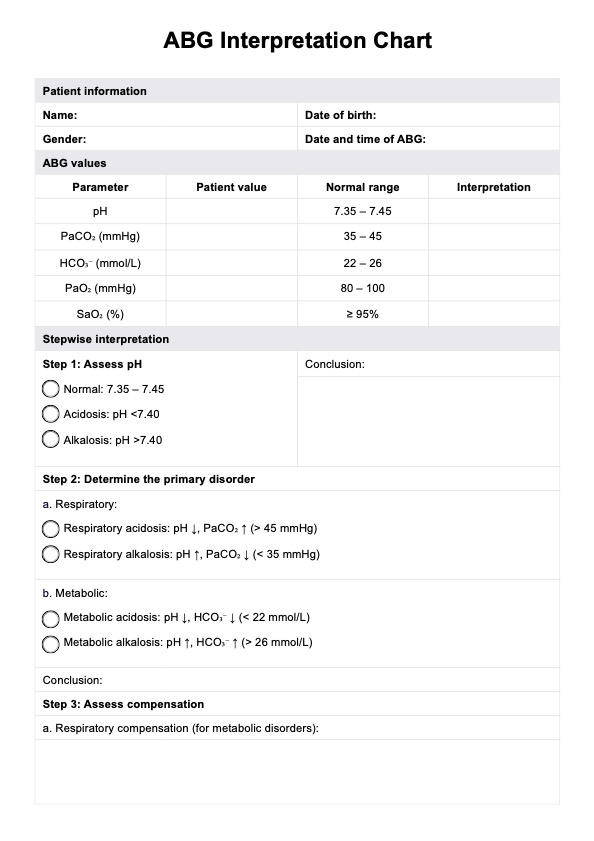ABG (Arterial Blood Gas) Interpretation Charts are primarily used by healthcare professionals such as physicians, nurses, respiratory therapists, and medical students. They help these professionals assess a patient's acid-base status, oxygenation, and ventilation to make informed decisions about diagnosis and treatment.

ABG Interpretation Chart
Discover ABG Interpretation Charts, essential tools for healthcare pros to evaluate acid-base balance, oxygenation, and ventilation in patient care.
Use Template
ABG Interpretation Chart Template
Commonly asked questions
ABG Interpretation Charts are used in various clinical situations, including:
- Monitoring critically ill patients in intensive care units (ICUs)
- Evaluating respiratory function in patients with lung diseases, such as asthma or chronic obstructive pulmonary disease (COPD)
- Assessing acid-base imbalances in patients with metabolic disorders or kidney diseases
- Evaluating the effectiveness of treatments, such as mechanical ventilation or oxygen therapy
Completed ABG Interpretation Charts should be stored securely in the patient's electronic medical record (EMR) or paper chart, following the healthcare facility's data privacy and storage protocols. It is essential to maintain accurate records of ABG results and their interpretations for future reference and to monitor treatment progress.
EHR and practice management software
Get started for free
*No credit card required
Free
$0/usd
Unlimited clients
Telehealth
1GB of storage
Client portal text
Automated billing and online payments











